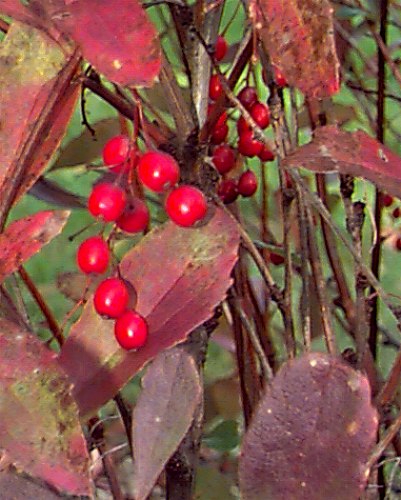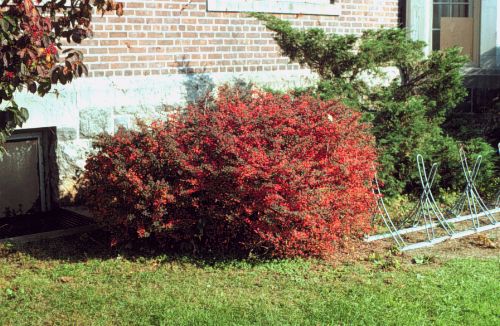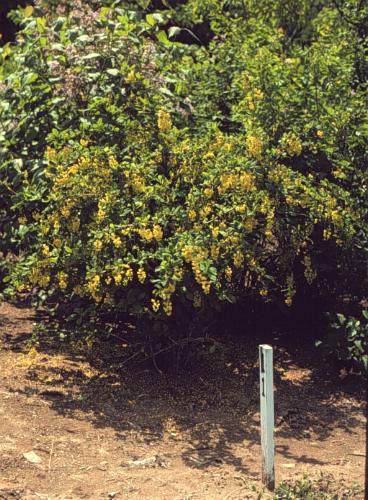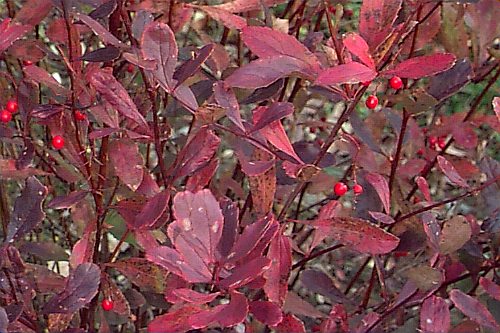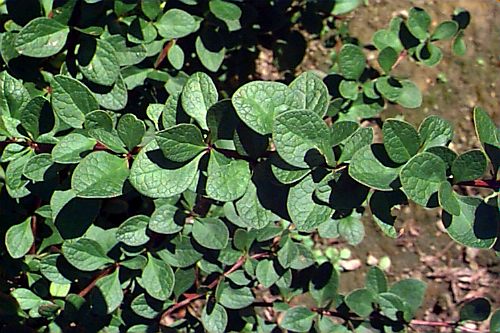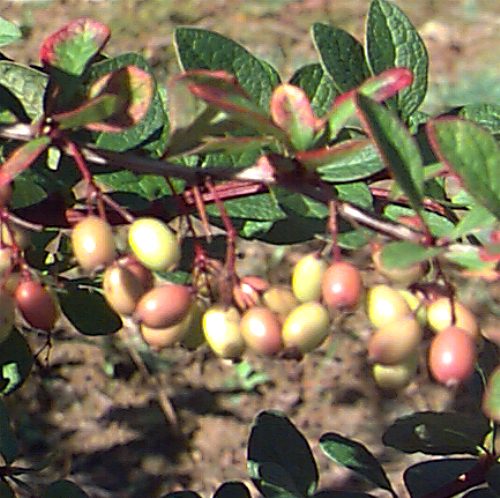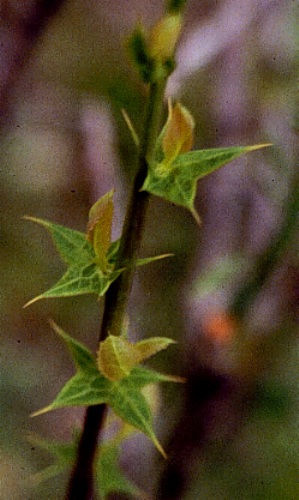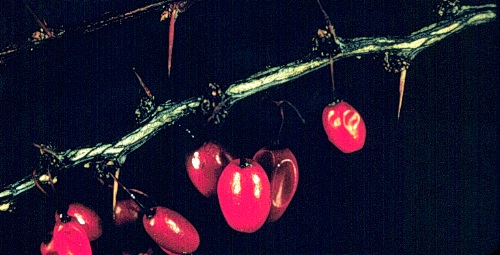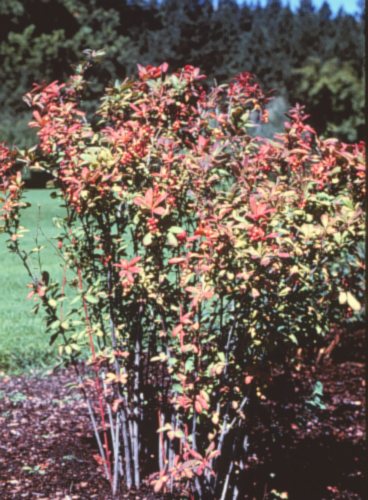Berberis koreana
Korean Barberry
Berberidaceae
ExpandHabitat
- native to Japan
- zone 3
Habit and Form
- semi-evergreen small shrub
- multistemmed
- oval growth habit
- 4' to 6' tall and almost as wide
- suckers
- medium growth rate
- medium texture
Summer Foliage
- simple, evergreen leaves
- alternate leaf arrangement
- elliptical leaf shape
- 1" to 3" long
- serrated margin with a rounded apex
- dark green leaf color
Autumn Foliage
- deep purple fall color
- leaves fall late if at all
Flowers
- yellow flowers
- flowers borne in long, pendulous racemes
- blooms in early May
- showy
Fruit
- oval berry
- red
- 0.25' long
- matures in mid-fall
- persist through winter
Bark
- reddish brown stems
- glabrous
- 1 to 5 spines, 0.25" long
Culture
- easily transplanted
- full sun to partial shade
- soil tolerant
- pruning tolerant
Landscape Use
- a four season plant
- massing or grouping
- hedge
- barrier due to thorniness
Liabilities
- large thorns and spiny leaves make the plant difficult to manage
- avoid use where small children will be present
- collects litter and leaves around the base
ID Features
- serrated evergreen, shiny leaves
- large, 1 to 5-branched spines at nodes
- spines are flattened adn resembles a duck foot
- reddish-brown bark on stems
- yellow flowers in spring
- red fruit in fall
- suckers
Propagation
- by cuttings
- by seed
Cultivars/Varieties
'Red Tears' - Known chiefly for the bright red fruits, which hang in clusters up to 4" long. The leaves are also reddish-colored on this arching shrub that reaches 6'.

